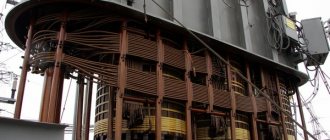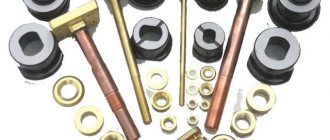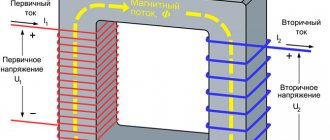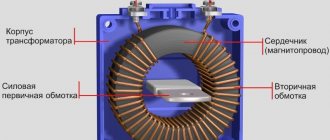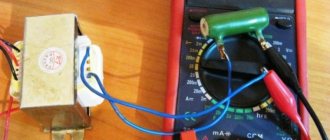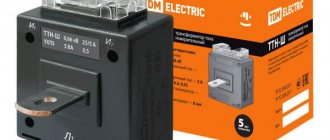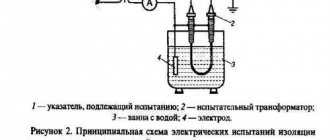The power grid requires competent handling, timely maintenance, that is, carrying out various preventive measures. In addition, this infrastructure is a fire hazard in principle, and accidents often occur on it. In this regard, it is extremely important that there are always organizations nearby - electrical laboratories, capable of quickly eliminating the breakdown with their qualified specialists. Ours is just such an enterprise, possessing all the necessary competencies, licenses, and certificates that confirm the professionalism of its employees. We are professionals in the field of electrical design, carrying out all types of electrical installation and repair work, as well as various electrical tests.
What kind of electrical measurements do we take?
The installation and maintenance of all types of wires and electrical devices are carried out by specialized electrical laboratories.
Only companies certified by Rostekhnadzor have the right to carry out measurements of electrical equipment. We have all licenses and self-regulatory organizations for carrying out any electrical installation work in Russia. Only a properly accredited organization can provide official protocols for the study of electrical networks and electrical facilities.
Only specialized electrical installation companies have the right to provide quality certificates (technical report on electrical equipment testing) for work performed, including partially completed modernization or repairs. List of services provided:
We carry out turnkey cabling from project to installation
A popular type of “cable” work is the installation and inspection of hidden electrical cables (primarily underground). In such situations, situations very often arise where the integrity of the conductors is threatened by certain factors that were not fully taken into account when laying them. We can talk about:
- excessive “wetting” of the environment around the cable;
- lack of proper protection from mechanical damage (for example, an excavator bucket);
- damage to the cable armor during installation.
In all these cases, it is required, firstly, to accurately identify the defective location without opening the soil or any excavation work. And secondly, quick localization and correction of the emergency area is necessary. has all the necessary instruments and tools, as well as a staff of competent specialists to promptly carry out these works.
REPAIR OF TRANSFORMERS
TYPES AND FREQUENCY OF REPAIRS
Domestic transformers are simple in design and reliable in operation. Their specific damage rate compared to other types of equipment is insignificant. However, to troubleshoot problems and prevent accidents, transformers are periodically put out for routine and major repairs.
The scope of current transformer repairs includes external inspection, cleaning, and elimination of identified damage. At the same time, the condition of valve seals, cooling systems, the operation of the oil indicator, the operation of gas protection, and the operation of automatic devices in cooling and fire extinguishing systems are checked. Moisture and sediments falling from the oil descend from the expander sump. The degree of moisture content of silica gel in the air purifier, adsorption and thermosyphon filters is checked. Silica gel is replaced if pink grains are found in the mass of purple-colored indicator silica gel grains. The oil in the oil seal of the air dryer is replaced; Oil samples are taken from the transformer and oil-filled bushings. The operation of voltage regulation devices is checked. The nitrogen protection system is inspected.
During routine repairs of transformers, the insulation resistance of the windings is usually measured. Measurements are carried out using a megohmmeter for a voltage of 2500 V.
Routine repairs of the main transformers of stations and substations, main and backup transformers for own needs are carried out at least once a year, if these transformers are equipped with an on-load tap-changer, in the absence of an on-load tap-changer - at least once every 2 years.
During a major overhaul, the transformer is opened, a thorough inspection and repair of all its components and tests are carried out.
Under operating conditions, major repairs of large transformers are carried out at the installation site using prefabricated structures, in transformer towers built near switchgears, at repair sites in the turbine hall of power plants that have access roads from the transformer installation sites. Low-power transformers are repaired in the electrical workshops of power plants.
Premises for repairs, as well as temporarily constructed shelters, must reliably protect transformers from dust and precipitation. Carrying out rigging work requires special knowledge and skills from repairmen. Therefore, delivering the transformer to the repair site, removing the bushings, lifting the active part and moving individual parts and assemblies is entrusted to specialist riggers.
Overhaul of the main transformers of power plants and substations, the main transformers for the auxiliary needs of power plants is carried out for the first time no later than 8 years after putting into operation, taking into account the results of preventive tests, and in the future - as necessary, depending on the condition of the transformer.
CONDITIONS FOR OPENING TRANSFORMERS FOR REPAIR
Moistening of the transformer insulation during repair occurs as a result of the absorption of moisture contained in the air. If the temperature of the active part of the transformer is lower than the ambient temperature, then when the air comes into contact with the relatively cold active part, moisture condenses on its surface and is absorbed by the insulation. In order to prevent the insulation from getting wet during repairs and to put the transformer into operation without drying, inspection and repair of its active part must be carried out in dry, clear weather. In this case, the active part is allowed to be kept in air with a relative humidity of less than 75% for no more than 24 hours for transformers up to 35 kV inclusive and 16 hours for transformers PO - 500 kV.
The time is counted from the beginning of draining the oil from the transformer. The temperature of the active part during repairs must exceed the dew point temperature of the ambient air by at least 10 °C. If this condition cannot be met, opening the transformer is postponed or the active part is heated to a temperature exceeding the ambient temperature by 10-15 °C. In case of rainy weather, the inspection is carried out in a room where the air temperature is maintained above the outside air temperature by at least 10 C. The time the active part remains in the air can be increased (no more than twice as compared to that indicated above), but at the same time the ambient temperature air must be above 0°C, relative humidity less than 75%, and the temperature of the active part must exceed the ambient air temperature by at least 10°C. If the active part is exposed to air longer than indicated above, control drying or drying of the insulation will be required, the need for which is established based on the results of measurements of the insulation characteristics.
SCOPE OF WORK PERFORMED
WHEN OVERHAULING TRANSFORMERS
110 kV AND HIGHER
Overhaul of a transformer without disassembling its active part includes the following stages of work: - disassembling auxiliary equipment; — lifting the removable part of the tank (bell) or the cover and the active part (for transformers with an upper tank connector) and installing them on the repair site; — inspection and repair of the active part; — inspection and repair of auxiliary equipment; — control drying or drying of the insulation of the active part; - tests.
Disassembly of auxiliary equipment.
Before disassembling, the transformer is inspected from the outside, it is found out what malfunctions were observed during operation, the operation of the cooling systems and winding tap switching devices is checked; inspect reinforcement, welds, reinforcement of insulators, seals and draw up an inventory of external defects. Then the insulation characteristics are measured, an abbreviated analysis is carried out and the tg 6 measurement of the oil from the tank is carried out. Then the oil is drained from the tank with air suction through a dryer and the AC/C insulation of the transformer is measured.
After completing the specified work, control devices, protection devices, automation and cooling system control devices are dismantled. The removed devices are sent to the laboratory for testing.
Next, remove the expander, safety pipe, thermosyphon filter and coolers. The oil-filled MV, HV and LV bushings are disconnected and removed using special traverses. Before removal, the LV inputs are disconnected from the flexible outlets through hatches.
Lifting the removable part. Before lifting the removable part, loosen and remove the bolts evenly around the entire perimeter of the tank connector. Release the spacer bolts between the tank and the active part. They sling the tank cover or bell, lift them using a winch or crane and install them on the repair site. For powerful transformers with a bottom connector, the active part is exposed when the bell is removed. For repairs, it usually remains on the pallet. For transformers whose tanks have an upper connector, the active part is removed from the tank and installed at the repair site.
Inspection and repair of the active part. During repairs, the condition of the insulation of windings, pressing parts of windings, bends and bolted connections, insulating cylinders, barriers and partitions is checked; magnetic circuit and its grounding, insulation of tie rods, pressing rings of yoke beams and bandages; winding tap switch.
To inspect the windings and magnetic circuit of the transformer, it is necessary first of all to dismantle the insulating partitions and other elements of its main insulation. When removing partitions, you should check whether they touch the windings and taps, and whether there are any traces of electrical discharges between them. The main insulation is checked by external inspection and is considered suitable for further use if the electrical cardboard is not fragile and does not break when bent in half. Bakelite cylinders are inspected and checked to see if there are any cracks on their surface, signs of discharge, or if they are delaminating. Damaged cylinders are replaced with new ones.
When inspecting the winding insulation, check whether it is damaged or swollen, and determine its mechanical strength. If premature aging of the insulation (fragility, loss of elasticity) is detected, the causes of this phenomenon are determined and measures are taken to eliminate them. When inspecting the pressing parts (bars, washers, rings), check their condition and the sufficiency of pressing of the windings. It is important to establish that there is no deformation or displacement of the windings, which may be the result of weak pressing. If necessary, the windings are pressed using insulating bars and wedges.
When inspecting the bends, check the condition of their insulation, soldering and contacts, as well as the insulating parts securing the bends. The detachable contacts of the taps are disassembled and cleaned. Soldered contacts that have defects are redone. The damaged contact insulation is replaced with a new one.
The magnetic circuit is inspected in all places accessible for inspection. At the same time, the tightness of the assembly of the steel packages, the absence of traces of heating, the integrity of the grounding and connections of the pressing rings and yoke beams with the magnetic circuit are checked. The degree of pressing of the steel of the magnetic circuit is checked with a special key by applying standardized forces to the nuts of the pressing pins.
The insulation condition of steel sheets is checked by measuring the direct current resistance of the varnish film of the steel packages and the entire magnetic circuit.
The insulation resistance of tie rods, compression rings and yoke beams is checked with a megaohmmeter at 1000-2500 V. The insulation resistance is not standardized, only the absence of short circuits is established.
Check the condition of the cooling oil channels in the magnetic core and windings. The minimum height of each oil channel in the windings must be at least 4 mm. There should be no sludge deposits in the channels that would impede oil circulation.
For transformers with off-circuit switches, the condition of the shafts, insulating cylinders, fastening parts, serviceability of the contacts and the sufficiency of their pressing are checked. The switch should move easily from one position to another.
For transformers equipped with on-load tap-changers, the serviceability of all switch mechanisms is checked: shafts, gears, clutch cams, etc. Attention is drawn to the absence of backlash in the kinematic diagram of the drive.
Check the condition of the reactors (or resistors), reliability of operation and the absence of carbon deposits on the contacts of the contactor and selector. If necessary, install new pairs of contacts. The oil in the contactor tank is changed.
During the repair process of a switching device, the contact resistance of its contacts and the force of contact pressure are measured. The transition resistance of one contact, measured with a microohmmeter, should not exceed 10-20 μOhm. The force of contact pressing is measured with a dynamometer, with the help of which the movable contact is pulled back until the control probe, sandwiched between the contacts, falls out. The measurement results are compared with the passport data.
After a thorough inspection, testing and elimination of all identified defects and damage, the active part of the transformer is washed with a stream of dry hot (60 ° C) oil of the same brand with which the transformer was filled before repair.
Inspection and repair of individual components and auxiliary equipment. Inspection and repair of the tank and its fittings begin immediately after removing the bell or removing the active part from the tank. The outer surface of the tank and lid are cleaned of dirt, oil leaks are eliminated, seals are replaced, and damaged paint on the tank surface is restored.
When repairing the expander and exhaust pipe, oil leaks in the welds are identified and eliminated. Inspection of the internal surface of the expander is carried out through the side hatches. In this case, the walls of the expander, the sump and the oil indicator are cleaned of dirt and washed with hot oil. Replace all defective seals. Check the integrity of the exhaust pipe membrane and the quality of its seal.
Thermosiphon and adsorption filters are checked for oil leaks (repaired if necessary), cleaned and filled with fresh, dried adsorbent. The air dryer is also cleaned, the serviceability of the oil seal is checked, and the main and indicator silica gel are replaced.
Mounted radiators on transformers with a cooling system are cleaned, repaired and washed with hot oil. The same applies to coolers and oil lines of cooling systems. Radiators and cooling systems are tested for leaks.
Circulation pumps, fans and their electric motors are completely disassembled, inspected and worn parts (bearings, impellers, etc.) are replaced. Electric motors are checked for the condition of windings, soldering, and fastenings. A 500 V megohmmeter is used to measure the insulation resistance value (the permissible value is at least 0.5 MOhm). The blowing fans together with the electric motors are balanced (the vibration value should be no more than 60 microns).
Oil-filled and porcelain bushings are cleaned and inspected to identify cracks in the porcelain, check fasteners, contacts, and reliability of seals. Oil is replaced in oil-filled bushings. Repair work associated with disassembling bushings is carried out in specialized workshops.
Transformer assembly after repair. After repair work is completed, the active part of the transformer, which has an upper connector, is lifted and lowered into the tank. Then install the rubber gaskets and the tank lid. For transformers with a bottom connector, a removable part - a bell - is installed on the pallet. The connector is evenly tightened with bolts. The active part is secured inside the tank. After this, the inputs are installed and connected to the taps from the windings. Gas outlet pipes are installed. The expander and exhaust pipe have not yet been installed; their hatches and all holes in the removable part of the tank are tightly closed with plugs.
The transformer assembled in this way is checked for leaks by creating a vacuum in the tank. The inspection reveals the quality of welds and seals. To prevent damage to the bushing tires when creating a vacuum in the transformer, they are connected with temporary rubber hoses to the vacuum space of the tank before the test begins. The transformer is considered sealed if no defects and no significant changes in the initial vacuum value are detected within 1 hour.
The transformer is kept under vacuum for 6 to 10 hours. Then, with the vacuum pump running, the transformer tank is filled with dry oil at a temperature of 50–60 °C to a level 150–200 mm below the level of the lid. The vacuum in the transformer is removed by gradually introducing air into the space above the oil through a silica gel (zeolite) air dryer.
After filling the transformer with oil, its final assembly is carried out: the expander and exhaust pipe, control and alarm devices are installed; install a cooling system and thermosiphon filters. Then oil is added to the transformer to a level corresponding to the ambient temperature.
On a fully assembled and oil-filled transformer with voltage regulation above the load, the operation of the switching device is checked.
Author:
views:12375
Date added:2008-09-14
We carry out installation and testing of grounding systems
We have been installing grounding and lightning protection systems at various facilities for more than 11 years. Our main clients are both private homes and industrial facilities:
- Country houses and dachas
- Hospitals
- Office buildings,
- Sports objects
- Industrial buildings
Over the years, we have been able to select a number of reliable suppliers who allow us to provide a guarantee for the work performed for 30 years.
What is our advantage over other companies?
We have all the approvals and competences both for the installation of any electrical equipment or individual network elements, and for eliminating the consequences in the event of an accident. However, we focus on comprehensive service to our clients. Only if preventive measures are carried out regularly can emergency situations related to electrical equipment be guaranteed to be avoided. The main advantage of our company lies in the integrated approach.
Contact Megawatt Service by phone 8(495) 241-29-85 or leave a request by mail
Transformer overhaul video
Coffee capsule Nescafe Dolce Gusto Cafe O Le Coffee with milk, 3 packs of 16 capsules each
1305 ₽ More details
Coffee capsules Nescafe Dolce Gusto Café Au Lait, 16 pcs.
435 ₽ More details
RAM for laptops
